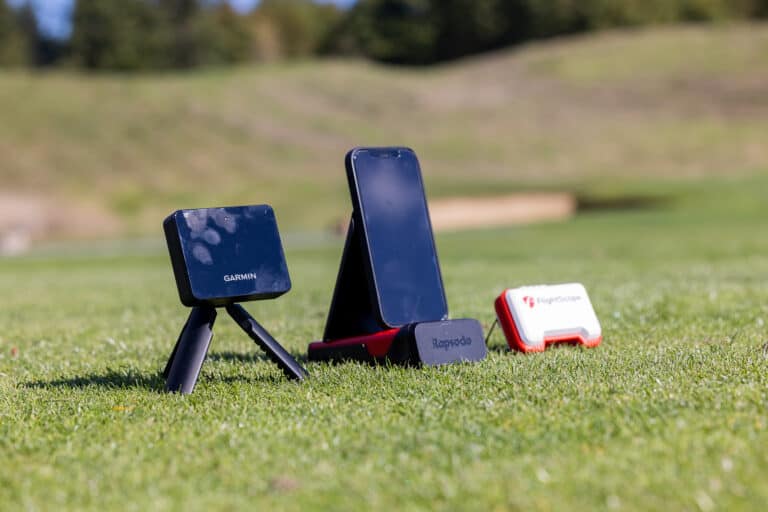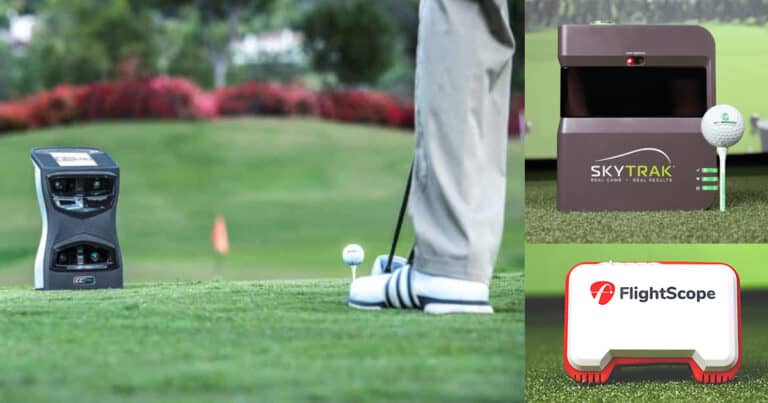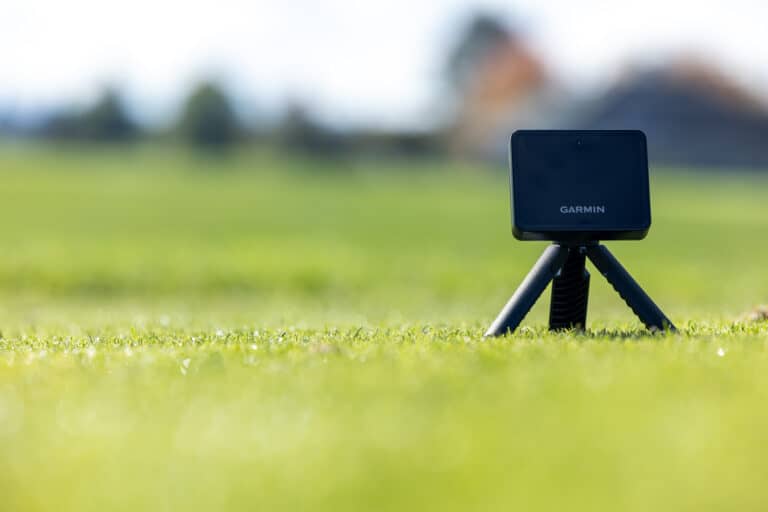Can a launch monitor measure club face angle at impact?
Obtaining accurate data on club face angle at impact is crucial for understanding and improving your golf swing. In this blog post, I will dive into the capabilities of launch monitors in measuring the club face angle at impact, as well as discuss the implications of this data for your game.
As a seasoned golf professional, I have extensive experience with various launch monitors and will offer insights into their accuracy and usefulness in this context.
Key Takeaways:
- Launch monitors can accurately measure club face angle at impact: Advanced launch monitor technology now have the capability to accurately measure club face angle at impact, providing golfers with important data to improve their swing and ball flight.
- Club face angle at impact affects ball flight: The club face angle at impact has a significant impact on the direction and trajectory of the golf ball. Understanding this measurement can help golfers make necessary adjustments to improve their overall performance on the course.
- Using a launch monitor can lead to improved performance: By utilizing a launch monitor to measure club face angle at impact, golfers can gain valuable insights into their swing and make adjustments to maximize distance and accuracy, ultimately leading to improved performance on the course.
Sure, I’d be happy to help you with that! Here’s the text for the next chapter of your blog post:
Performance and Precision of Launch Monitors
Now, let’s discuss the performance and precision of launch monitors. When it comes to measuring club face angle at impact, precision is crucial for getting accurate data. Launch monitors use various sensors and advanced technologies to provide precise measurements of club and ball data at impact. However, the quality of these measurements can vary depending on the sensor resolution, detection accuracy, and other impact factors.
Sensor Resolution and Detection Accuracy
One of the key factors influencing the precision of launch monitors is their sensor resolution and detection accuracy. The higher the sensor resolution, the more detailed and accurate the measurements of club face angle at impact.
Detection accuracy is equally important, as it ensures that the launch monitor can reliably capture and analyze the motion of the club face at impact. This combination of high sensor resolution and detection accuracy is essential for obtaining precise data on club face angle.
Impact Factors and Resistance Considerations
When it comes to measuring club face angle at impact, there are several impact factors and resistance considerations to take into account. These factors include the speed and direction of the club head, the angle of attack, and the resistance from the ball and turf. Additionally, the launch monitor must be able to accurately measure the impact of various clubs and ball types. As I know from experience, even slight variations in these factors can significantly affect the club face angle at impact.
- Club head speed: A higher club head speed can exert more force on the ball, affecting the club face angle at impact.
- Angle of attack: The angle at which the club head strikes the ball can alter the club face angle at impact.
- Resistance from the ball and turf: Different ball and turf conditions can impact the accuracy of club face angle measurements.
Assume that these impact factors and resistance considerations can directly impact the precision of club face angle measurements obtained from a launch monitor.
I hope this text is helpful for your blog post! Let me know if there’s anything else I can assist you with.
Features and Customization Options
If you are considering investing in a launch monitor, it is important to understand the various features and customization options available. Depending on the model you choose, there may be a wide range of capabilities and settings that can be tailored to your specific needs and preferences.
Adjustability and Compatibility with Different Clubs
When it comes to adjustability and compatibility with different clubs, it is crucial to consider the range of clubs you intend to use with the launch monitor. Some models offer extensive customization options, allowing you to input data for various clubs and adjust settings to accurately measure club face angle at impact. Additionally, compatibility with different shaft types and lengths is also an important factor to consider when assessing the adjustability of a launch monitor.
Automation and Interactivity Enhancements
Automation and interactivity enhancements can greatly impact the usability and functionality of a launch monitor. Look for features such as shot tracking, automatic data capture, and real-time feedback to enhance your overall experience.
The ability to interact with the data and customize the display settings can also contribute to a more tailored and insightful analysis of your club face angle at impact. The inclusion of automated features can streamline the process of gathering data, allowing for more efficient practice and analysis.
By considering the adjustability and compatibility with different clubs, as well as the automation and interactivity enhancements, you can ensure that the launch monitor you choose is capable of accurately measuring club face angle at impact and providing the valuable feedback you need to improve your golf game. Take the time to thoroughly research the available features and customization options to find the best fit for your specific needs and preferences.
Efficiency and Usability in Practice
Your launch monitor’s ability to measure club face angle at impact directly impacts its efficiency and usability in practice. Let’s take a closer look at how these factors play out in real-world scenarios.
Portability and Ease of Use on the Field
When it comes to using a launch monitor on the field, portability and ease of use are crucial. Being able to easily transport the device to different locations and set it up quickly can dramatically improve your practice sessions.
Additionally, a user-friendly interface and intuitive controls can make the process of capturing and analyzing data seamless. Look for a launch monitor that offers both portability and ease of use for maximum efficiency.
Sustainability and Maintenance for Long-Term Reliability
For long-term reliability, sustainability and maintenance are essential aspects to consider. Investing in a launch monitor with durable construction and reliable technology can save you time and money in the long run.
Furthermore, regular maintenance and updates are crucial to ensure that your device continues to provide accurate measurements over time. Prioritizing sustainability and maintenance will extend the lifespan of your launch monitor and maximize its usability in the long term.
Integration and Innovation
Lastly, it’s important to consider the integration and innovation of a launch monitor when evaluating its ability to measure club face angle at impact. The technology in modern launch monitors is constantly evolving, and it’s crucial to understand how seamlessly the device can integrate with other equipment and software to provide a comprehensive analysis of your swing.
Connectivity and Compatibility with Other Devices
When selecting a launch monitor, it’s vital to consider its connectivity and compatibility with other devices. The ability to sync your launch monitor with your smartphone, tablet, or computer can greatly enhance your overall experience.
Additionally, compatibility with popular golf simulation software and other training aids can provide a more holistic view of your performance. Look for a launch monitor that offers versatile connectivity options to make the most of your investment.
Enhancing Training with Data-Driven Insights
Furthermore, the ability of a launch monitor to enhance your training with data-driven insights is a key consideration. Beyond simply measuring club face angle at impact, a high-quality launch monitor should provide comprehensive data on ball flight, launch angle, spin rate, and more.
This wealth of information can help you identify strengths and weaknesses in your game, allowing you to fine-tune your technique and make informed decisions on equipment selection. Utilizing these data-driven insights can lead to significant improvements in your performance on the course.
By incorporating these elements of integration and innovation into your evaluation of a launch monitor, you can ensure that you are investing in a device that not only measures club face angle at impact accurately but also provides comprehensive connectivity, compatibility, and data-driven insights to elevate your overall golf experience.
Conclusion
Upon reflecting on the capabilities of launch monitors, it is clear that they can indeed measure club face angle at impact. This measurement is valuable for gauging the accuracy and consistency of your shots, and can help pinpoint any errors in your swing.
By utilizing this data, you can make necessary adjustments to improve your performance on the course. Understanding and utilizing launch monitor data, including club face angle at impact, can be a game-changing tool for golfers looking to elevate their game.




